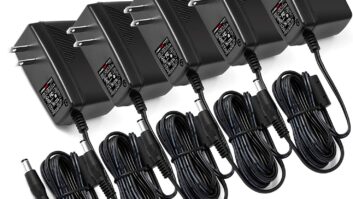In addition to handling special project work, Matt Lightner, principal of Lightner Electronics, gets called in to stations for troubleshooting and maintenance. Visit his Web site at www.lightnerelectronics.com.
Recently, Matt was asked to identify a problem inside an AM antenna tuning unit. There, he discovered the station was running on “mice” power.
(click thumbnail)Fig. 1: A Coil Condo is an attractive home to Peromyscus leucopus.Peromyscus leucopus is the white-footed mouse, which seems to love nesting in phasors and tuning networks. These cute varmints can wreak havoc in any station setting.
Matt suggests sealing all holes and ensuring that the phasor or ATU doors fit securely. Mice can gain entry through openings as narrow as 1/2-inch!
This is the time of year when rodents will seek warm, dry shelter. A few precautions will keep them out of your facility.
At a recent BE-sponsored transmitter workshop, we discussed protecting facilities against snakes and rodents. A liberal sprinkling of moth balls was suggested.
This idea was expanded upon at the recent Wisconsin Broadcast Clinic. Their evening nuts-and-bolts session is always worth the time; everyone learns something. This year, Shively’s Bob Surette moderated the panel. He kept the discussion flowing with a variety of topics.
One tip was using copper “wool” — the equivalent of steel wool, but made of copper — to seal larger entry ports in racks, transmitters and phasor gear.
A recent problem is that copper wool has gotten awfully expensive, as with any copper product. One engineer suggested substituting stainless steel wool found at your local Dollar Store. The stainless steel wool pads are cheap and won’t rust, so they are ideal for plugging holes.
(click thumbnail)Fig. 2: As a replacement for copper wool, use less expensive stainless steel wool to plug holes.Stuff them in the cracks and openings to keep rodents and snakes out. It was pointed out that rodents will chew through RTV or expanding foam, but they leave the copper or stainless steel wool alone.
For information on the Wisconsin Broadcast Clinic, bookmark this site for next year: www.wi-broadcasters.org. Click on the Broadcasters Clinic Program.
* * *
Allen Branch sends a note about solving a dead tower beacon problem and saving his client the cost of a tower crew.
His clients reported the failure but were warned by the FAA they had 15 days to fix the problem.
Allen decided to start his investigation on the ground first. The client had no idea where the beacon flasher was, and Allen eventually found it: one of those SSAC black “cubes.” Allen noted discolored lugs where the wires connected to the SSAC block. It turns out the lugs were loose.
Allen removed and cleaned the lugs, tightened them with pliers and pressed them back onto the flasher cube. Problem solved.
Keep connections tight. This is a great maintenance tip that applies to everything from the transmitter to the AC electric boxes.
Allen Branch is with Alleo, a contract engineering firm.
* * *
Paul Sagi writes to Workbench from the other side of the world — he’s based in Kuala Lumpur — and always includes tips that can be used anywhere.
Recently, Paul had to open a Studer CD player to change out the laser. The player had countersunk allen-key-head screws on the rear that needed to removed.
As Paul attempted to remove the screws he found they were jammed and would not budge. Putting a wrench on the allen key merely twisted it. It looked as though the hex hole was going to get damaged if he persisted.
Paul took a small, sharply pointed center punch, and put the point against the screw head at the 9 o’clock position. He tapped the punch with a hammer to drive it towards the 7 o’clock position.
A couple of sharp taps loosened the screw enough that the allen key could be used. The fine-tipped center punch did not deform the hex hole.
Paul notes that these screws are used on the front of many pieces of rack-mounted equipment. He cautions that the punch you use should be very sharply pointed or you might find it leaving the screw and scratching the front panel of expensive equipment.
It goes without saying not to use this method on screws that hold glass or plastic panels.
* * *
(click thumbnail)Fig. 3: Note coil clip locations with a permanent marker.At a recent SBE Ennes Workshop, I discussed the use of fine-tipped Sharpie brand permanent markers to identify the location of coil clips or rollers on variable coils. See Fig. 3. The rationale is that if the clip falls off, it’s an easy job to push it back where it belongs.
Bill Weeks of Wolftron has been tuning up a new AM site for WGNY(AM) and found the marker suggestion helpful. He took the idea a step further by color-coding the marker settings.
Sharpie permanent markers come in a variety of colors; Bill found this “color coding” useful in identifying coil clip positions for different parameters as the array was tuned.
He adds that after the tune-up is complete, nail polish remover does a fabulous job of removing the multiple “permanent” marks from the coil windings. And like the Sharpies, nail polish remover is easy to find — even at odd hours — at a 24-hour drug store or 7-Eleven.
Bill Weeks has documented the construction of the new array at WGNY with lots of pictures. The project includes a counterpoise ground system, designed by Clarence Beverage of Communications Technology. (www.commtechrf.com). Look for an article in the pages of RW when the site is completed.














